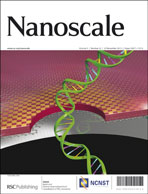Facile synthesis of hydrogenated carbon nanospheres with a graphite-like ordered carbon structure†
Abstract
We report a synthesis of hydrogenated carbon nanospheres (HCNSs) via a facile solvothermal route at low temperatures (60–100 °C), using CHCl3 as the carbon source and potassium (K) as the reductant. Selective cleavage of the relatively lower stable C–Cl bonds (compared to C–H bonds) of the carbon precursor (CHCl3) by K metal results in the growth of HCNSs. The diameter of HCNSs ranges from 40 to 90 nm. The HCNSs have a graphite-like ordered carbon structure in spite of their high degree of hydrogenation. The HCNSs exhibit an average Brunauer–Emmett–Teller (BET) surface area of 43 m2 g−1, containing a small amount of mesopores and macropores in the structure. The nanospheres’ sample as an anode material for lithium ion batteries (LIBs) has been studied. It exhibits a high discharge capacity (3539 mA h g−1 in the first cycle, 978 mA h g−1 after 50 cycles) and good cycling stability, demonstrating advantages as a promising candidate for anode materials in LIBs. The high capacity of the HCNSs is due to their unique nanostructures and high percentage hydrogenation, as well as hydrogenation induced structural defects.


 Please wait while we load your content...
Please wait while we load your content...